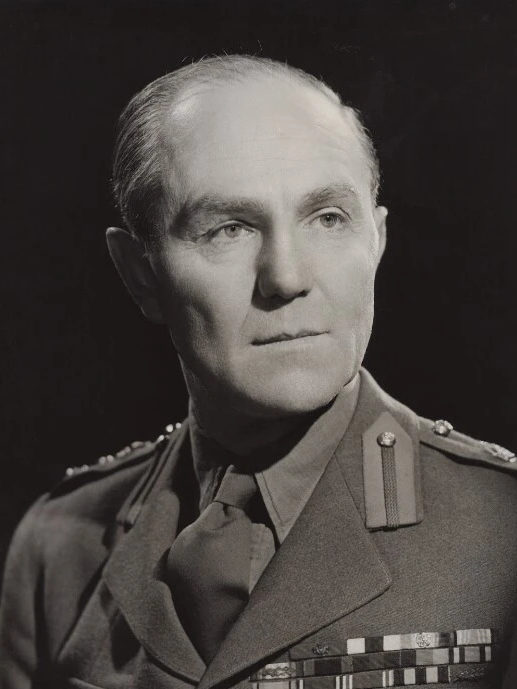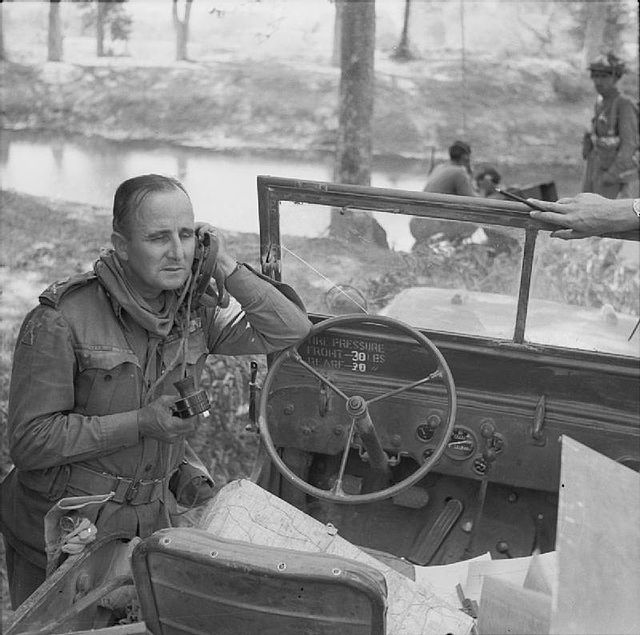The introduction of every new major weapon requires reorganization of the army. The use of the machine gun in the First World War resulted in new organization. On the eve of the Great war, the British army had one machine gun section of two guns with each infantry and cavalry regiment. In October 1915 the Machine Gun Corps (MGC) was formed. Motor cycle mounted machine guns called Motor Machine Gun Service (MMGS) was operated by Royal Artillery. MGC organized machine guns into infantry, cavalry and motor elements. The cavalry element of MGC was formed from machine gun sections of British and Indian cavalry regiments on the western front. The heavy branch of MGC used tanks for the first time and separated from MGC after its conversion into Tank Corps (later called Royal Tank Regiment) in July 1917. MGC served well in advance of the front lines and suffered heavy casualties, earning the nick name ‘The Suicide Club’. After the war, MGC was disbanded in 1922. In India, machine guns were also incorporated, initially few machine guns were allotted to each infantry battalion especially those on active service on north western frontier of India. In 1929, infantry battalion with four rifle companies was re-organized into three rifles and one machine gun company. A few years later this was reversed and infantry battalion again became four rifle company battalion.
In the Second World war, Indian infantry regiments raised machine gun battalions. Most of these were newly raised battalions and not numbered but called machine gun battalion followed by infantry regiment number e.g. Machine Gun Battalion 6th Rajputana Rifles. 7th Rajput, 9th Jat, 10th Baluch, 11 Sikh, 12th Frontier Force Regiment, 13th Frontier Force Rifles, 14th, 15th & 16th Punjab Regiments, 17th Dogra Regiment and 19th Hyderabad Regiment raised machine gun battalions. These machine gun battalions were raised between October 1941 and July 1942. Officers, Viceroy Commissioned Officers (VCOS) and other ranks from infantry battalions of the regiment formed the core of newly raised machine gun battalions and new recruits and Emergency Commissioned Officers (ECOs) were posted to bring them up to strength.
In a few cases, regular infantry battalions were converted into machine gun battalions i.e. 3rd Battalion of 2nd Punjab Regiment (3/2 Punjab Regiment), 5th Battalion of 5th Marhatta Light Infantry (5/5 MLI) and 9th Battalion of 13th Frontier Force Rifles (9/13 FFRif). 3/2 Punjab Regiment was decimated in Egypt and when remnants were collected, the battalion was converted to a machine gun battalion for a few months (August 1942 – June 1943) before reverting to an infantry battalion. 9/13 FFRif was a war time raised infantry battalion. In August 1942, it was converted into 54th Regiment Indian Armored Corps but two months later reconverted to infantry battalion. In May 1944, it was sent to Quetta to train as machine gun battalion.
A territorial 12th Malabar Battalion was also converted into a machine gun battalion for a brief period and was on garrison duty for internal security. In September 1941, it was converted into a regular infantry battalion and titled 3rd Battalion 3rd Madras Regiment. In October 1942, it was re-titled 2nd Battalion 3rd Madras Regiment and later, in September 1944 it was converted into Machine Gun battalion and transferred to 25th Indian Infantry Division.
Machine Gun battalion of 14th Punjab Regiment was converted into a training battalion and titled 15th Battalion of 14th Punjab Regiment (15/14 Punjab Regiment). Machine Gun battalions of 15th and 16th Punjab Regiment were converted to anti-tank regiments and transferred to artillery. Machine Gun battalion of 17th Dogra Regiment was fully motorized with more than one hundred vehicles. Machine Gun battalion of 19th Hyderabad Regiment was raised at Agra on 15 April 1942 but three months later converted to infantry battalion as 9th Battalion of 19th Hyderabad Regiment.
Machine Gun battalion of 11th Sikh Regiment was raised at Nowshera on 15th January 1942. Class composition was fifty percent Sikh and fifty percent Punjabi Muslim. It was attached to 7th Indian Infantry division but when the division moved to Arakan in July 1943, the battalion was left behind to be converted to a support battalion. Battalion was moved to Ranchi to be trained for its new role. In July 1944, battalion was reverted to machine gun battalion and joined 19th Indian Infantry Division.
D Company was with divisional headquarters and remaining three companies attached with brigades. A Company with 98th Brigade, B Company with 62nd Brigade and C Company with 64th Brigade.

19th Indian Infantry Division was raised in 1941 by Major General Sir Jackie Smyth, VC. Division’s dagger insignia was designed by Smyth’s wife. Later, Major General Thomas Wynford Rees nick named ‘Pete Rees’ commanded the division during recapture of Burma. Pete Reese was not a Sandhurst graduate but graduated from Officer Cadet College Quetta and originally commissioned in 73rd Carnatic Infantry (later 1st Battalion of 3rd Madras Regiment). A year later, he transferred to 125th Napier’s Rifles (later 5th Battalion of 6th Rajputana Rifles). He fought First World War with Napier’s Rifles winning Distinguished Service Order (DSO) and Military Cross (MC) within a five days period. He entered the Second World at the rank of Lieutenant Colonel commanding 5th Battalion of 6th Rajputana Rifles and three years later was General Officer Commanding (GOC) of 10th Infantry Division in 1942. In the same year, he was appointed Officer Commanding (GOC) of 19th Infantry Division. He won bar to his DSO during the Second World war. Machine Gun battalion of 19th Infantry Division was from 11th Sikh Regiment.
Machine Gun battalions were raised during the war to be used by the division for reinforcement of threatened infantry or armored positions. Some battalions were reverted to infantry role while others were transferred to artillery for anti-tank role. After the war, these machine gun battalions were disbanded.
End Notes
Dagger Division: Story of the 19th Indian Division. (Director of Public Relations, War Department, Government of India; Bombay: G. S. Borker)
http://www.vickersmachinegun.org.uk/world-indiapakistan.htm
http://ww2talk.com/index.php?threads/machine-gun-battalions.60788/page-2




